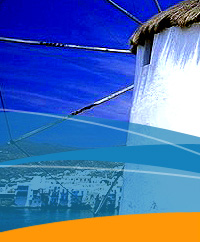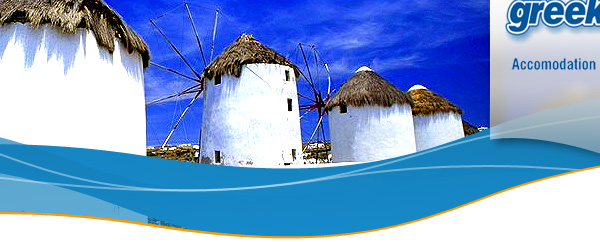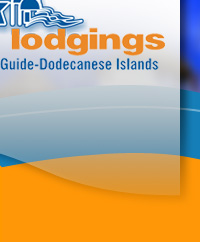|
 |
|
 |
| |
 |
Arki Island |
Information on Arki holidays - Greece |
| |
|
|
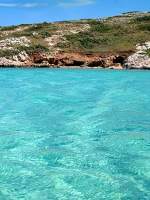 Arki is probably one of the least-visited islands in Greece, with a permanent population of only 40 people. The island population is so small that on my last visit the school only had one pupil! There is not so much to 'see' here, but the atmosphere can be enticing. There are few facilities on the island with only a handful of rooms and only one very small mini-market, so don't expect the same type of treatment you would get in the nearby resort islands even though the island has become something of a haven for yachting types. The island of Arki or Akrihs and Narkoi, as it was named in ancient times, belongs to the jurisdiction of Patmos and is at a distance of 11 km SE of Patmos. The island is surrounded by small islets that constitute the Arki island complex (Marathi, Smineronisi, Tsouka, Tsoukaki, Avaptistos, Makronisi, Psathonisi, Kalovolos and Nisaki). Arki is probably one of the least-visited islands in Greece, with a permanent population of only 40 people. The island population is so small that on my last visit the school only had one pupil! There is not so much to 'see' here, but the atmosphere can be enticing. There are few facilities on the island with only a handful of rooms and only one very small mini-market, so don't expect the same type of treatment you would get in the nearby resort islands even though the island has become something of a haven for yachting types. The island of Arki or Akrihs and Narkoi, as it was named in ancient times, belongs to the jurisdiction of Patmos and is at a distance of 11 km SE of Patmos. The island is surrounded by small islets that constitute the Arki island complex (Marathi, Smineronisi, Tsouka, Tsoukaki, Avaptistos, Makronisi, Psathonisi, Kalovolos and Nisaki).
|
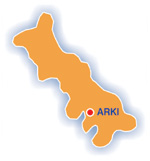 |
|
 |
 |
 |
 |
About Arki island! |
|
 |
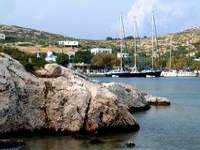 The best thing about this island is its complete lack of tourists. For one month only (August), the island buzzes with activity, and for the remainder of the time, you can pretty much have the island to yourself. The main square next to the port is surrounded by taverns, which stay open all hours and all serve excellent food. There are a few beaches, the largest one being at Tiganakia, which has nearby small islands that can be reached by swimming. Other than that, the island has no natural water and is rocky and barren. A 15 minutes hike up the hill to a tiny old church gives a breath-taking view of the surrounding islands. Today's 40 The best thing about this island is its complete lack of tourists. For one month only (August), the island buzzes with activity, and for the remainder of the time, you can pretty much have the island to yourself. The main square next to the port is surrounded by taverns, which stay open all hours and all serve excellent food. There are a few beaches, the largest one being at Tiganakia, which has nearby small islands that can be reached by swimming. Other than that, the island has no natural water and is rocky and barren. A 15 minutes hike up the hill to a tiny old church gives a breath-taking view of the surrounding islands. Today's 40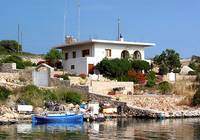 permanent inhabitants of the island of Arki are mainly involved in fishing and stock breeding. Arki, with its beautiful and very picturesque harbour constitutes a paradise for yachts and boats in summer. The feast held on August 23rd for Virgin Mary offers to the visitor the genuine Greek character with traditional folk music and local dishes. In the island, there are inns that can provide for the stay of visitors who seek serenity, beauty and the genuine hospitality of the locals. In the summer there is connection with Patmos, twice a week, with Chios with local boats and with Lipsi with chartered boats. permanent inhabitants of the island of Arki are mainly involved in fishing and stock breeding. Arki, with its beautiful and very picturesque harbour constitutes a paradise for yachts and boats in summer. The feast held on August 23rd for Virgin Mary offers to the visitor the genuine Greek character with traditional folk music and local dishes. In the island, there are inns that can provide for the stay of visitors who seek serenity, beauty and the genuine hospitality of the locals. In the summer there is connection with Patmos, twice a week, with Chios with local boats and with Lipsi with chartered boats.
|
 |
 |
 |
 |
Arki History |
|
 |
| Due to lack of potable water and the small surface of the island, there has never been a compact settlement there. As in the other islands, in Arki too, the first inhabitants were the Kares followed by the Dorians and the Ionian Greeks from Militos who exploited Arki as an intermediate station in the channel between Samos – Kos. They built a small fortress so that they could control the biggest part of the passage. Data indicates that the fortress was built in the early Hellenistic years, possibly in two phases of construction. The North Western part of the fortress (the tower at least) dates to the 4th century B.C. It is said that in the Roman years, the fortress was destroyed by Julius Caesar, once he managed to free himself from Farmakonisi where he was held as a hostage. From the fortress alias «Avgoustini's castle” as is called today, today's port of Arki acquired its name, the port of Avgousta The ancient fortifications were used again in the early Byzantine years, after having been reinfroced appropriately. At the site of the fortress and at the highest part of the tower, there must have been direct visual contact with Kasteli, the citadel of Patmos. When, in 1087, Saint Christodoulos became owner of Patmos, the island of Arki was used by the Monastery as farming land and pasturing ground. Today's inhabitants of the island may be descendants of the farmers and sheperds of the Monastery, that still owns great part of the land. Two bronze coins were found on the island, of which one is of the roman type of concord (omonoia) (Alikarnassos-Kos), where on one side we see Karkalas and Cietis. At Tiganakia, a small sandy beach at the south of the island, and in particular at the eastern end, prehistoric pottery has been found (Neolithic period), In Koutsoura (area), at the NA part of the island, fishermen report that there are buildings in the sea.
|
 |
 |
Arki BEACHES |
|
 |
About Tiganakia Beach
On any other island, this beach would be overlooked; however, this is Arki's one and only decent beach. Although it is not hundreds of metres long and sandy, it is pleasant in its own way, and out of season, you are guaranteed to have it all to yourself. The beach is in a slight cove and separated into three parts by rocky outcroppings. It is part pebbled, part sandy. The main attraction to this beach, however, is the swimming. It is easy to reach the nearby small islands by swimming across the bay, although you will have to watch out for boats during high season. The beach is a good 45-minute walk from the town, with no paths and only one sign to direct you. To reach it, you should head away from the town along the main road, passing a couple of bays on your right, and when you reach the end of the road, continue straight until you reach a sign, do as it instructs, and walk in the direction of the island you can see in the distance. You should eventually reach your destination. In summary, it is not an essential trip, but worthwhile if you fancy a dip in the sea. |
 |
 |
Arki island useful information |
|
 |
Arki is connected to Patmos and neighboring Lipsi.
For more information:
Port Authorities of Patmos:+30 22470 31231
Port Authorities of Lipsi: +30 22470 41333
Community of Arki: +30 22470 41206 |
| |
|
 |
 |
Arki SITES/MUSEUMS |
|
 |
In Pantanassa, at the top of the mountain, laid the old settlement of the Achaians. In the same area, there is also the oldest temple of the island «Panaghia Pantanassa». Other churches are Aghioi Anargiri, at the harbour's entrance and Metamorfosi ton Sotiros in the village. The Church of Aghios Eleftherios is under construction
The remains of the castle are worth seeing and if one likes hiking, at an hour's distance and at the back side of the island, there is a magnificent cavern to be found with stalactites and stalagmites, still virgin and unexplored, In Arki, the principal stone is limestone In the island there are many clumps of trees such as wild olivetrees, carobs, fig trees, rush and pine trees. The wild fauna of theisland consists of rabbits and grouse The very old wild olive trees suggest the presence of significant olive groves in the island. |
| |
| |
 |
| |
| |
| |
| |
|
|
| |
| |
|
| |
| [back to top] |
|
 |
|
|


